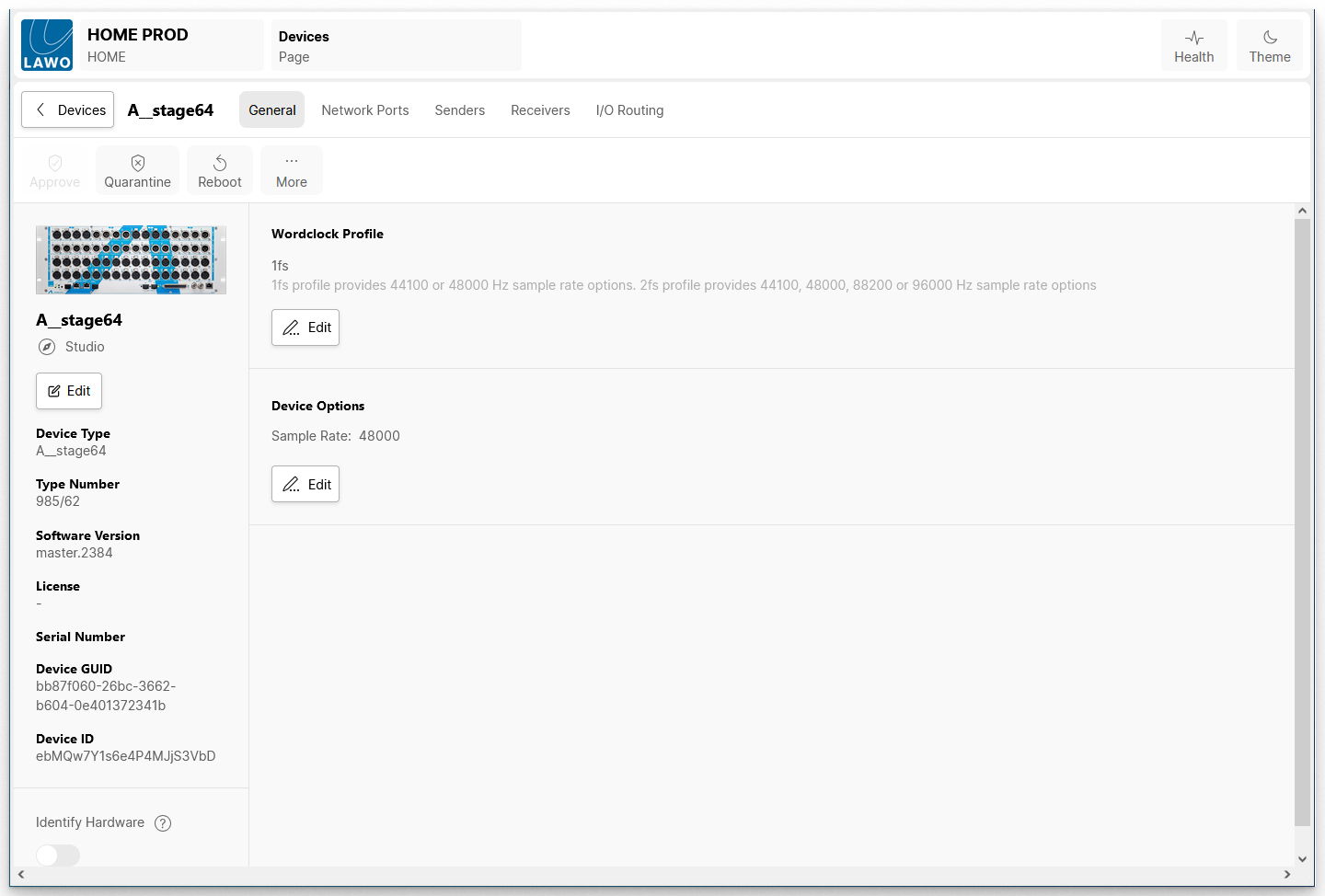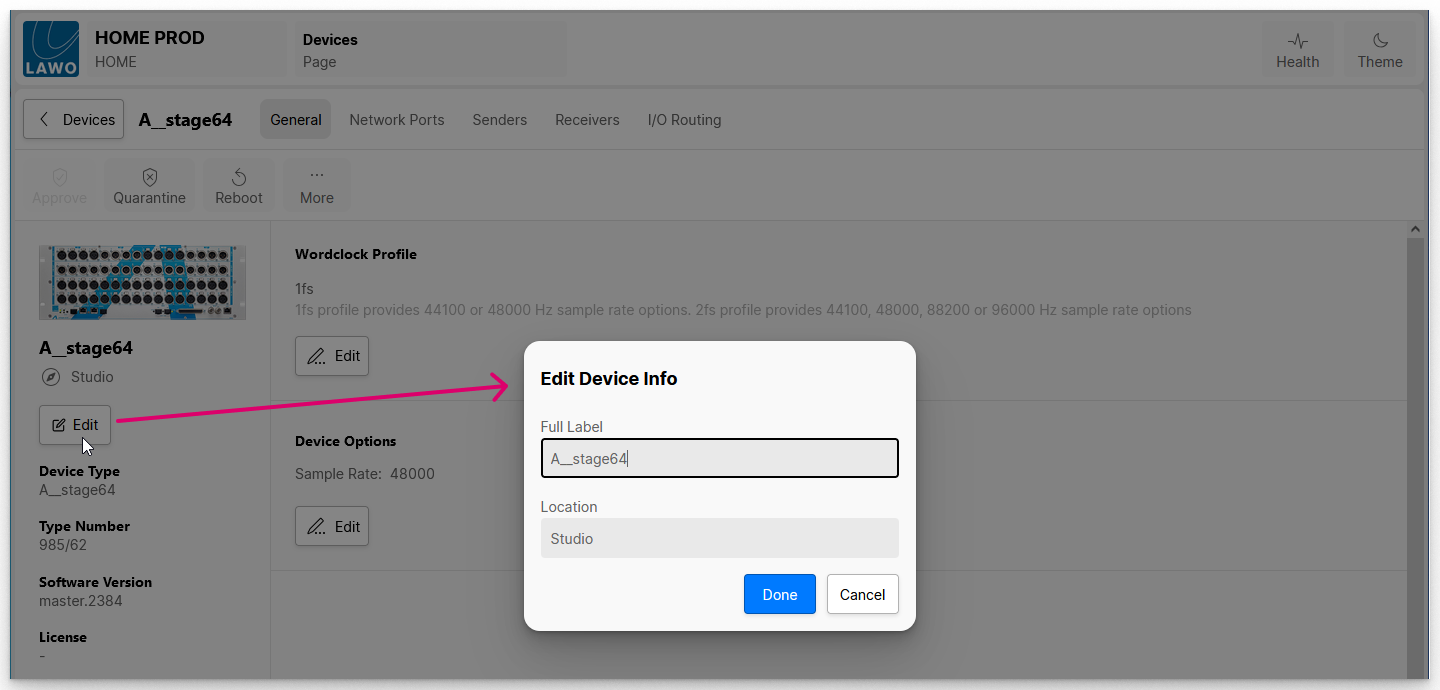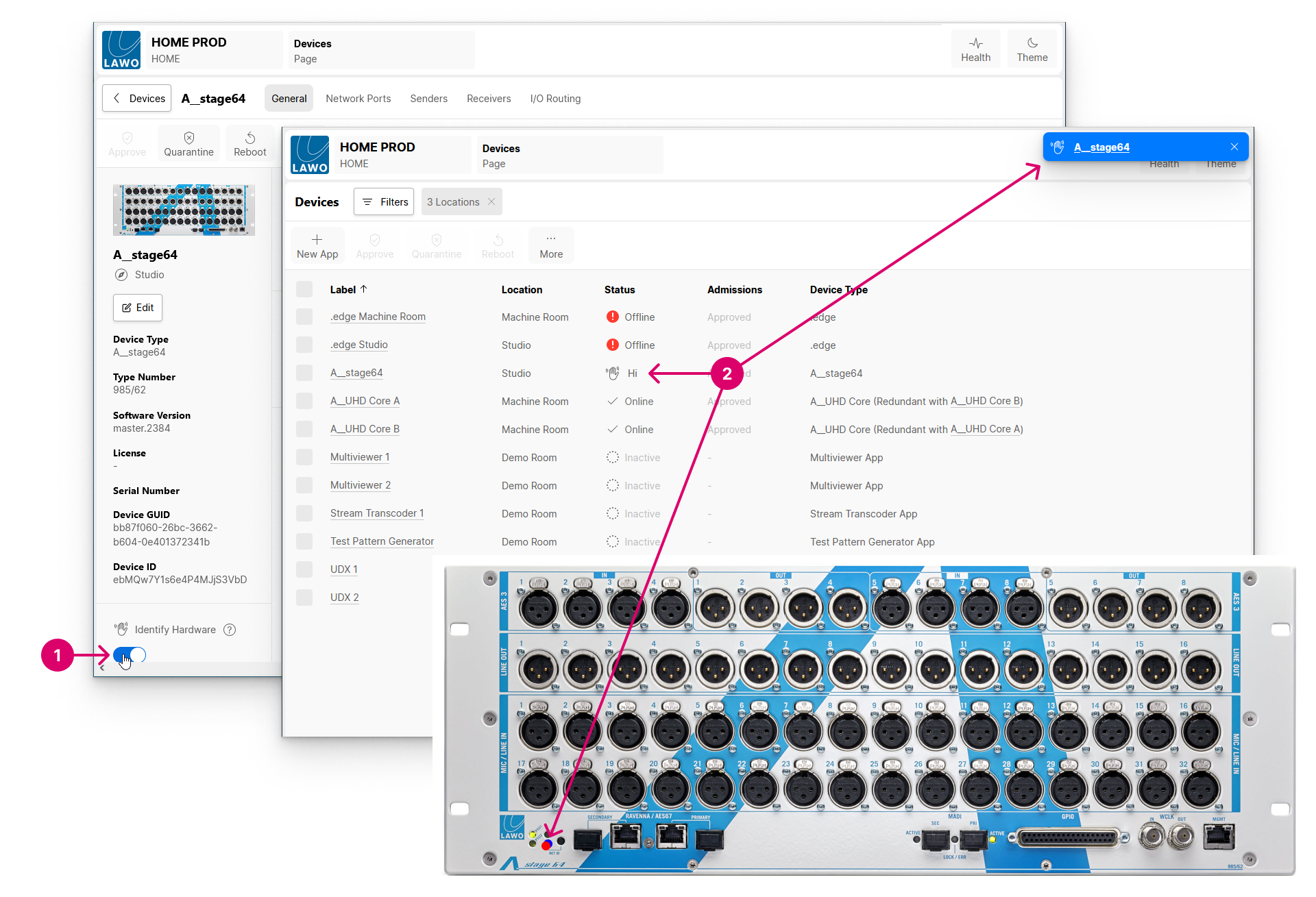HOME Device - General Settings
The Device → General tab can be used to check and edit the device's general settings.
From here you can check information such as the Software Version and Serial Number; edit the device label and location; or use the "Identify Hardware" function.
- Click on the device label (from the main 'Devices' list) to open the 'Device → General' settings (as described earlier).
- The page opens with the General tab selected.
Overview
The General settings tab is divided into three main sections with device management operations (at the top), general information (on the left) and other settings (on the right).

Device Management Operations
For convenience, the following functions (from the "Devices" list) are repeated at the top of the General settings tab:
- Approve or Quarantine - click to approve or quarantine the device.
- Reboot - click to reboot the device.
- More - click for more operations.
For more information, please refer to HOME - Devices List Operations.
General Information
Below the device image/icon are several informational fields that show the device label (and location), device type, type number, etc. These are read-only unless otherwise specified. If you see a question mark icon, then you can hover over this to reveal a tooltip.
Of particular note are the Software Version and Serial Number which are important for compatibility and licensing.
The Edit button can be used to edit the device label or location (as described below).
The Identify Hardware button can be used to identify a physical device (as described here).
Device-Specific Settings
The area on the right provides access to other general settings for the device. These vary depending on the device type.
In the example above, they can be used to change the Wordclock Profile (1fs or 2fs) and Device Options (sample rate) of the A__stage device.
Edit Label and Location
Click on the Edit button below the current label to open the 'Edit Device Info' dialog.

There are two fields for each device: the Label and Location.
Label
- A label must be entered. This field cannot be left blank.
- Each label must be unique (within the HOME system).
- The label can be edited without affecting the configuration.
- For all devices that are automatically detected by HOME, a default label is assigned.
Location
- Entering a location is optional. This field can be left blank.
- The location can be edited without affecting the configuration.
Identify Hardware
The Identify Hardware button can be used to identify a physical device by flashing an LED or showing a message on its front panel. This makes it easy to identify the device you are about to configure.
Click on the ? icon (beside Identify Hardware) to read the on-screen help.
Follow the steps below to use this function.

- Scroll down to the bottom of the page and turn on the Identify Hardware slider.
- This sends a message to the device to flash an LED or show a message on its front panel. At the same time, a “Says Hi” message appears in the "Devices" list and in the status area (beside the "Health" icon).
If other users have the HOME Web UI open, then they will see the on-screen alert. They can either click on the device label to open the "Device Details" page, or click on X to close the alert.
Tip: To quickly clear all of the on-screen alerts, refresh the browser window.
Once you have identified the device, turn off the Identify Hardware slider.